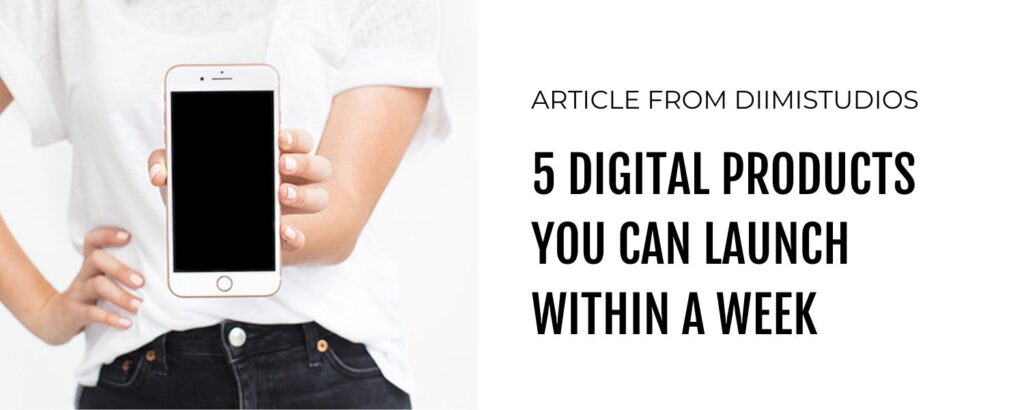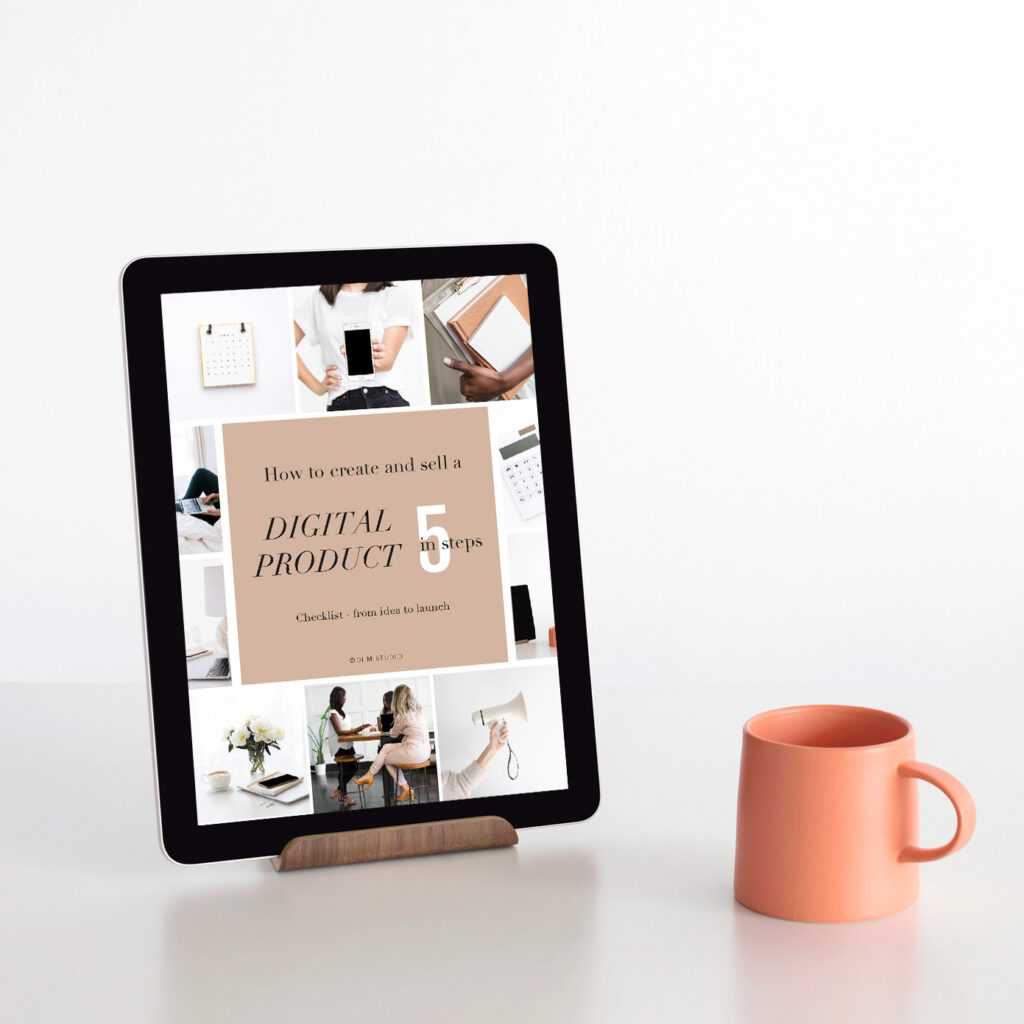MENU
MENU
I write about modern digital concepts and products, plus other ways of running online businesses. Sometimes I also write about things that makes life easier as a business owner.
I love having you here!
Hi
& welcome
Love Mia
The interest of buying digital products from small (and large) businesses is still massively increasing. More and more people are realizing the great benefit of being able to access each other’s expertise, regardless of where we live and regardless of which area of knowledge we are choosing to learn about in life. Courses are sold on all sorts of topics and niches, even when the skill is practiced outside of the digital world. You can learn about scrapbooking, sourdough baking, chicken farming or piano playing, all digitally and online. You can buy checklists for cleaning and organizing, weekly meal planning and Bible reading. And you can find professional ready-made price lists, quotations templates, brand profiles and entire websites in template shops at your fingertips. Everything can be digitized and everything can be sold as a digital product.
What is a digital product?
A digital product is a value that can be delivered fully automated and digitized, i.e. something that does not need to be physically sent by post or that requires a meeting in real life. The value of the product lies in imparted competence, experience or design. It can range from documented processes and working methods to ready-made templates and products. The actual product delivered can be a digital file or a collection of templates. It can be a guide, a checklist, an e-book, an audio file, a recorded coach call, an instructional video, a course, a recorded workshop, etc. Simple digital products rarely need any involvement of the seller outside of the automated delivery. They are therefore very suitable for setting up as automated, passive, international income streams.
How do you sell a digital product?
A digital product can be sold in many ways. It can be displayed in your own webshop on your website, on a marketplace together with other sellers (think Etsy or a course platform like Udemy) or on a separate landing page where interested parties are led from a link in social media.
All the steps a potential buyer is led through, from learning about your product for the first time until it is finally placed in the shopping cart and purchased, is called a sales funnel. A well-functioning sales funnel consists of a number of steps that potential customers are guided through, with each step offering just the information needed to effectively lead them through the buying journey. The goal is to convert as large a percentage of the traffic as possible into paying or booking customers. You can read more about what a sales funnel is in this article.
What functionality is needed to sell a digital product?
So, what do you need to have in place to be able to sell your product then? Well, essentially an automated sales funnel consists of five components:
- A nicely packaged digital product
- A landing or sales page
- Checkout with digital delivery
- Marketing content
- A channel for marketing
#1 A nicely packaged digital product
The most obvious thing that needs to be in place is the digital product itself, i.e. the value element you are selling. The product needs to meet a need. Either a need that already exists or a need that arises when stakeholders see your product. Your product therefore needs to be first-class and deliver great value that meets the needs of your target group.
A digital product can be anything from a file to a conversation or a recorded video. You yourself know in which format the competence you want to convey works best with, but if you need inspiration about how you can package and sell your digital product, you can read this article.

Ultimately, your digital product needs to be represented by a nicely packaged file in an accessible digital format, such as a reasonably sized pdf file, a link to a video playback, or a digital file that can be emailed or downloaded.
#2 A landing or sales page
In order to be able to present your digital product, some form of sales page or landing page is required, i.e. a place where you can present the value of the product. A well-converting landing page offers just the information needed to lead the customer to a purchase. It usually presents information about who the product is suitable for, what problems it solves and what needs it fills, what is included in the purchase, how it is delivered, what the product costs, etc. An effective landing page is built using simple purchase psychology and makes a potential buyer imagine how much easier, more beautiful, less painful or different life can be with the help of your product, so-called future pacing.
#3 Checkout with digital delivery
All work is undone until you have a working checkout. Checkout functionality simply means a way for customers to pay online when making a purchase decision. Today, there are incredibly simple and flexible payment solutions to use on your own website, even if you do not have an integrated webshop or your own shop on a marketplace like Etsy. It is called ‘buy buttons’. For a small amount of money each month, you can subscribe to a payment service from, for example, Kwikk, Shopify or Stripe that provides a checkout flow directly from your website.
Since the value needs to be delivered at the time of purchase, your checkout functionality also needs to include the digital delivery, i.e. completed payment needs to be able to trigger an email with a link, access, a file or a download in some form. Most systems with checkout functionality have that feature today, but for a functioning digital flow, this process needs to be simple, fast and neat. So you need to check this before subscribing to a checkout service.
#4 Marketing content
The marketing material for digital products is important to spend time on, not least because it can be difficult to concretize what a digital product looks like in real life. Fortunately, there is a plethora of templates and so-called mock-ups to use in apps like Canva and the like these days.
Edit in a short clip of a video into a mock-up of a computer screen to give a sense of what it might look like when playing the video in a home or office environment. Insert the layout of the first page of your e-book into a mock-up of a real book to give the feeling of how it would look like a physical book. Or show off your website design, templates and templates in mock-ups of phones, ipads and laptops to show how they look on the screen.
If it is a larger digital product you are selling, of course you need to display the content so that the customer knows what it is they are buying, but if the value of the product is the design itself, then be a little careful with what you display and how you display it so that it cannot be copied directly. Here you can see how I present my templates to potential customers.

#5 A channel for marketing
So, where are your potential customers? Where do they prefer to hang out? On Instagram, LinkedIn, Pinterest, Facebook or Tiktok? Do you already have a target audience eager to buy or do you need to pay to be seen? Furthermore, are people finding your website or your shop? Can you trust your SEO and Google to work for you so that those who want what you offer find you?
Choose a channel and make it your primary communication path for your so-called cold leads, i.e. potential customers who come across your brand and your offer for the first time. Maybe you also have an e-mail list that you can use as a sales channel for the customers who already know your brand and have bought from you before.
When choosing the right channel you need to consider how big the decision is to buy your product. Is it a quick decision or does it require some thought? The bigger the decision, the more you need to be available to your customers.
Your choice of marketing channel obviously affects your sales potential. An email list is often rated as the number one sales channel, but above all it’s about finding the right channel for the customer in relation to the size of the decision they need to make to buy. It is important to experiment until you get to know your target group.
Summary
The key to creating a digital income stream lies in getting all of these five components to work together. Finding exposure in the channels where your target audience hangs out, having eye-catching marketing content, and providing the information on the landing page needed to create conviction. Simply try to create a seamless process for those who find you and are interested in what you have to offer. If you want to get further and get closer to launching your own digital product, download my checklist “How to create and sell a digital product in 5 steps“.
I wish you well and hope that you find great joy in the process of creating and selling your own digital products!
Five things you need to have in place to sell a digital product

